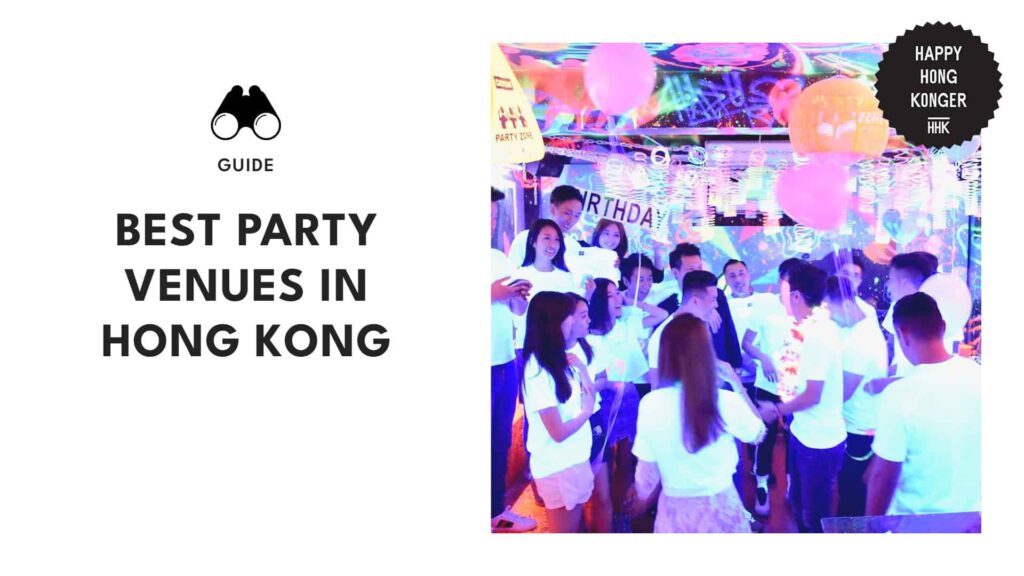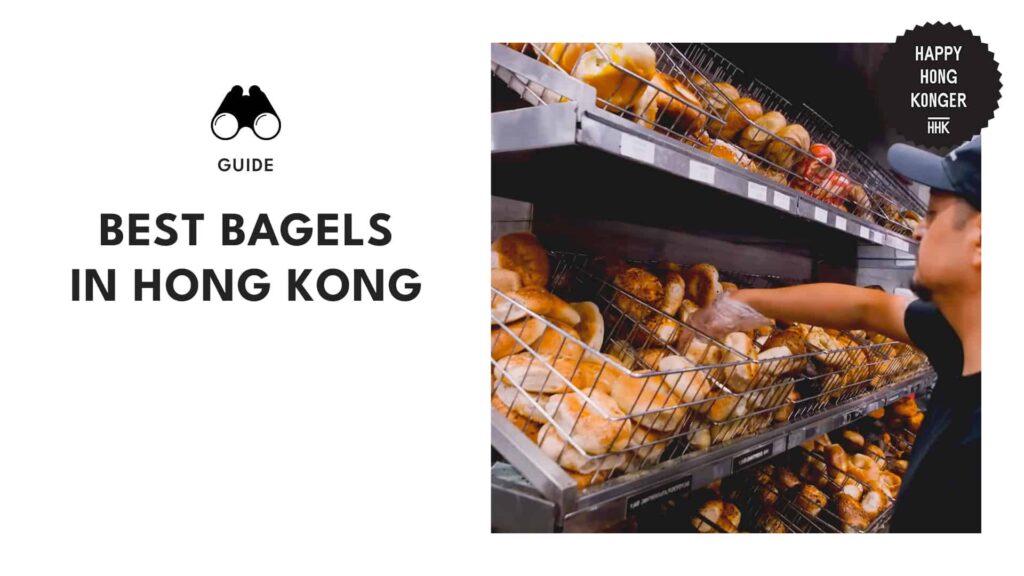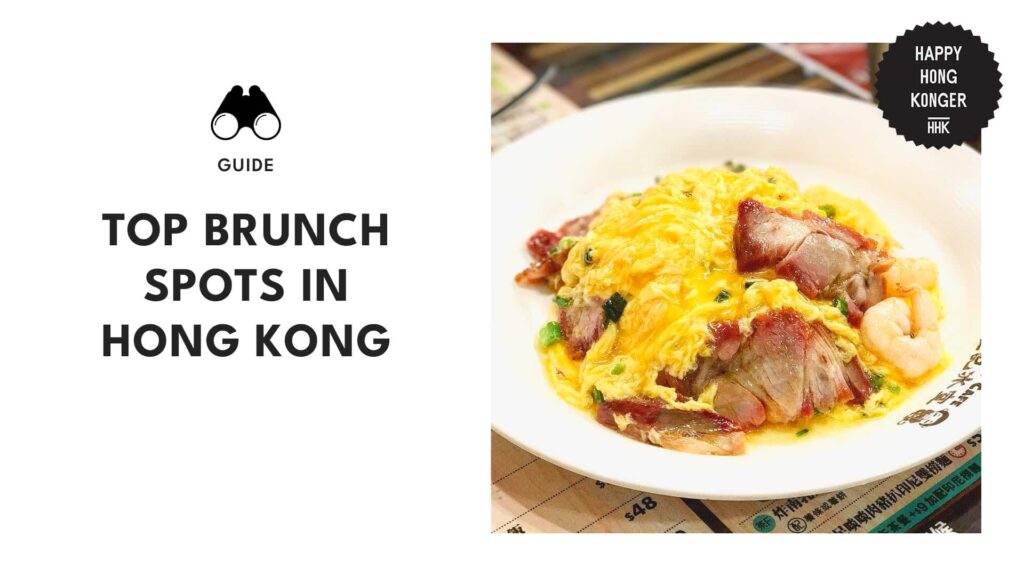Categories > Guides and Tips
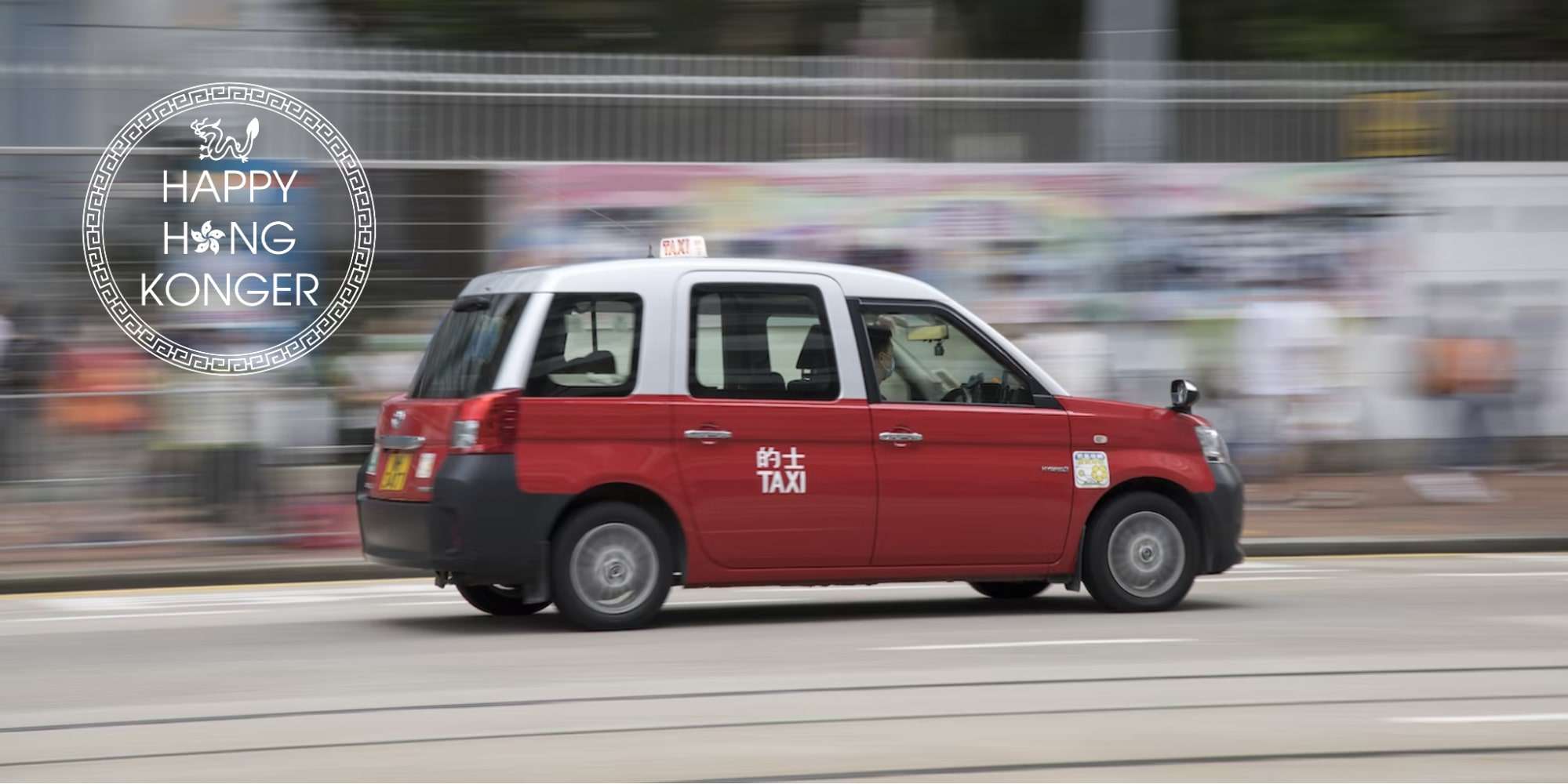
Why are Hong Kong taxis so old?
While other countries have already gone for more modern car models, cars like Nissan Cedric and Toyota Crown Comfort are still rolling throughout the city streets.
So why are we seeing such old car models? Why are Hong Kong taxis so old?
Hong Kong taxis are old because the government ceased issuing taxi licences in 1994 to avoid taxi oversaturation.
As new licensees are most likely to bring new cars, this means fewer new car models. Current licensees can replace their cars, but in Hong Kong, as long as the car works, it’s kept in service!
Today, no other city has the distinctive taxi image as deeply ingrained into the popular imagination as Hong Kong’s iconic coloured taxis.
Here’s an exploration of how Hong Kong’s heritage of taxis came to be, from a peek at World War II to the bold colours that now rule the streets of the city.
The History of the Hong Kong Taxi or Dik Si (的士)
Before World War II and the cabs of today, rickshaws were a viable alternative to walking, taking the bus, or riding the tram to get around town.
The first taxis appeared in 1941 when a local businessman by the name of Wu Zung started a fleet of 40 vehicles.
The Japanese occupation put a stop to his business, but taxis quickly returned to the streets after the war was over.
There were 330 legally authorised taxis at the end of the 1940s. For the first two miles on Hong Kong Island and the first mile in Kowloon, the fare was fixed at HK$1.5, with a further 20 cents for each additional quarter mile.
Taxi tariffs weren’t standardised until 1974, when Kowloon and Hong Kong Island fare differences were eliminated and all cabs were compelled to use the same livery.
What colour and car model were Hong Kong’s first taxis?
Although red is one of Hong Kong’s most common colours and was the only colour that remained consistent in the liveries of all the different taxi firms, there doesn’t appear to be any documentation as to why it was picked.
Lantau taxis first appeared in 1982, while New Territories taxis first appeared in 1976. Their respective colours make more sense: green represents the lush New Territories and blue represents beach Lantau.
In the 1980s and 1990s, the majority of cab owners chose big, dependable cars like the Nissan Cedric and the particularly well-liked Toyota Crown Comfort. The latter was honoured in 2011 with a special award by Toyota’s president, who appreciates its practical beauty.
The 3 Different Types of Taxis in Hong Kong
The three types of taxis in Hong Kong are differentiated by service area and can be identified by colour. Each type’s service area refers to the specific parts of Hong Kong where it’s permitted to ply its trade.
This designation of service areas was required to prevent a taxi shortage in some areas of the territory. The government realised that taxis tended to concentrate in more populated or lucrative areas, which led to a shortage in the less populated spots.
This scheme ensured a fairer distribution of services, as defined by the government in the 1960s.
Note, however, that all three types of taxis provide service to Hong Kong International Airport, Hong Kong Port of Hong Kong-Zhuhai-Macau Bridge, and The Disneyland Resort.
1. Urban Taxis (Red)
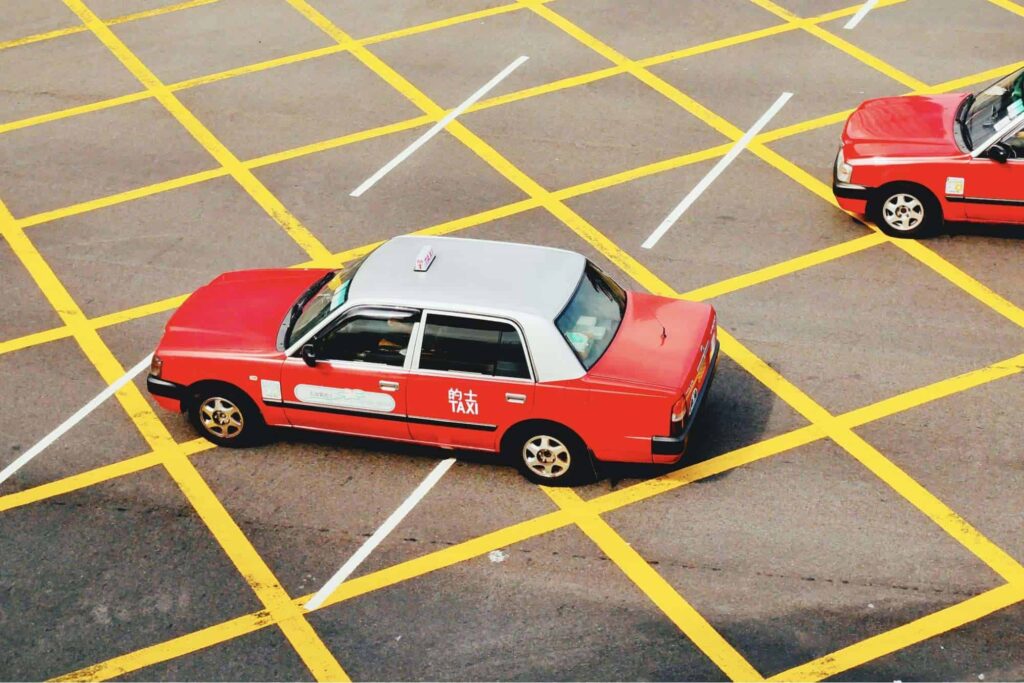
All areas of the New Territories, Kowloon, and Hong Kong Island are served by the red taxis, which charge the highest rates of all.
They are also allowed to cross the Hong Kong Port, Chek Lap Kok, and the Hong Kong-Zhuhai-Macau Bridge, but not the majority of Discovery Bay or the section leading down to Shek Mun Kap.
When a taxi has its roof light on but its “For Hire” flag is covered by an “Out of Service” sign, it is either on its way to pick up customers who have made an electronic or telephone reservation, or it is attempting to get a fare back over the harbour tunnel.
The red taxi is undoubtedly the most recognizable and versatile type of cab, as well as the most common. The taxi has come to symbolise the distinctive traffic pattern of Hong Kong.
Nowadays, these taxis start off at $24 for the first two kilometres, then charge $1.7 for every additional 200 metres.
Specific taxi stands were established to relieve the burden on taxi drivers to pay an out-of-pocket toll fee or double-charge clients when they look to cross-harbour since these cabs cover cross-harbour regions.
2. New Territories Taxis (Green)

Only some areas of the New Territories are served by the second-most costly taxis, the green ones.
These areas include Wan Po Road north of Shek Kok Road, Ma On Shan, Yuen Long District, Northern District, Tai Po District, Sai Kung, West of Ting Kau, and North of Tai Mo Shan Country Park.
Green taxis are sometimes referred to as covering the New Territories because of their green exterior, which may mirror the region’s rugged terrain.
The New Territories fleet, which is a touch less expensive than red taxicabs, charges $20.5 for the first two kilometres before dropping to $1.5 per 200 metres.
The Transport Department has established unique New Territories taxi stands outside the next designated zone.
So that on the rare occasion someone flags down a green cab to leave the New Territories, taxi drivers are spared the inconvenience of having to drive back alone or idle for an extended period of time.
They are permitted to follow designated routes by the Transport Department:
- Shun Lee Estate (which is actually in Kowloon)
- Hang Hau Station, Tsing Yi Station, and Tsuen Wan Station, which are primarily designated interchange with red taxis and MTR
- Tseung Kwan O Hospital (only the A&E)
- Sha Tin Racecourse (near Penfold)
3. Lantau Taxis (Blue)

Blue taxis, which serve Lantau Island and Chek Lap Kok, are less popular due to their small territorial claim.
Only around 75 of these blue cars exist, and they cost $19 for the first two kilometres and then $1.5 per 200 metres.
There are also tales of unauthorised and unregistered automobiles with matching blue livery operating an illegal taxi service in the summer due to an increase in demand from beachgoers and hikers.
What cars are most used for Hong Kong taxis?
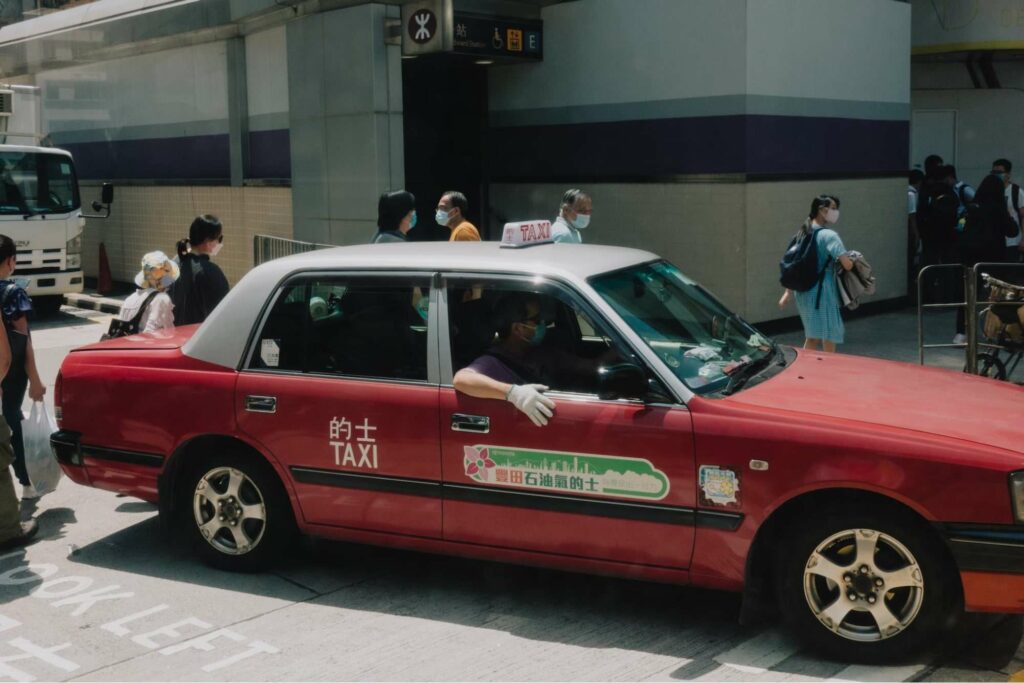
Up to the 1960s, vehicles such as the Standard, DeSoto Deluxe, Morris Oxford, Ford Popular, Hillman Minx, Austin 8, Austin Cambridge, Mercedes W120 Ponton, Ford Anglia, Vauxhall Cresta, and Vauxhall Velox were in use.
Japanese automobiles have taken the place of the many European models utilised up to the 1970s.
The Toyota Crown Comfort YXS10 and Nissan Cedric Y31 have consistently been the most well-liked models among these.
Four-passenger taxis were first launched in the early 1980s. Smaller saloons were deployed, such the Mitsubishi Lancer, Toyota Corona (CT141), Nissan Bluebird 910, and Nissan Sunny B12.
By the middle of the 1990s, all of these had been phased out. All Hong Kong taxis have been 5-passenger vehicles since that time and up until 2008.
However, starting in 2008, the new Toyota Comfort was fitted with a new 2.0 VVT-i engine and a floor shift automatic transmission in place of a column shift transmission, making it once more a 4-passenger cab.
The majority of taxis in Hong Kong today are Toyota Comfort XS10s (over 99%), with a small number of Nissan Cedric (Y31) saloons that were phased out at the end of 2005.
Development of Taxis in Hong Kong
In terms of development in Hong Kong’s endearing taxi industry, it seems to face a bleak future.
The development of the Uber sector has been the largest shift to the industry in recent years, aside from taxi model upgrades to bigger and more accessible cars.
Although the taxi industry in Hong Kong has so far resisted Uber’s attempts to join the Hong Kong market, more and more drivers are considering joining the Uber community.
The reasons for this are mainly because of the greater cost, which is occasionally viewed as a safer, cleaner choice by the public who are health-aware, as well as an assurance of good service.
Despite that, Hong Kong taxis will always be symbolic of the city’s charm and grit, imparting to passengers a part of history.

